11 Best Tourist Places in AhmednagarAhmednagar is a city in the Indian state of Maharashtra, and it is situated 114 kilometres from Aurangabad and 120 kilometres northeast of Pune. On the location of a battle where he fought superior Bahmani forces, Ahmed Nizam Shah I founded Ahmednagar in 1494 and gave the place its name. In the early Yadava era, the city was referred to as Bhinar. Malik Amad Nizam Shah, who founded the Nizam Shahi dynasty, conquered it in 1490. Later, the Mughals, Marathas, and British all conquered the city. The Mughal palace and gardens and Amad Nizam Shah's Fort, where Jawaharlal Nehru was detained by the British in the 1940s, are two of its most significant historical landmarks. 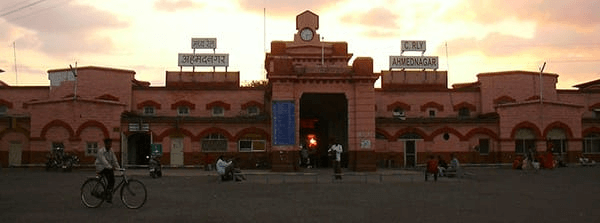
The cooperative movement started in Ahmednagar, home to 19 sugar factories. Ahmednagar is a small town with less development than Mumbai and Pune, two towns neighbouring western Maharashtra. The primary language used for communication in daily life is Marathi. The native livelihood is primarily based on agriculture. The main dry crops in the area are millet, wheat, and cotton, while sugarcane is the most significant irrigated crop. Processing sugar and pressing and ginning cotton is involved in industries. However, rainfall is highly unpredictable, and food scarcity is a regular worry. Ahmednagar recently released a development plan for the city for the year 2031. HistoryOn the location of the city of Bhingar, Ahmad Nizam Shah I constructed Ahmednagar in the year 1490. Following the downfall of the Bahmani Sultanate, Ahmad founded the Nizam Shahi dynasty in Ahmednagar, the second sultanate. It was the other Deccan sultanates, and it lasted until Shah Jahan the Mughal conquered it in 1636. The final Mughal emperor, Aurangzeb, died in Ahmednagar and was buried in Aurangabad in 1707; a small monument commemorates the location. Aurangzeb spent the last years of his empire (1681-1707) in the Deccan. The Nizam of Hyderabad granted the Peshwa of the Marathas control of the location in 1759, and the Peshwa later handed it to the Maratha chief Daulat Rao Sindhia in 1795. A British force led by Richard Wellesley attacked and eventually took Ahmednagar. Following its return to the Marathas, Ahmednuggur again came into British control in 1817 due to the provisions of the Treaty of Poona. Tourist Attractions in AhmednagarSome of the best tourist places in Ahmednagar, Maharashtra, are: 1. Tomb of Salabat Khan IIThe structure, originally the Tomb of Salabat Khan II, is mistakenly called Chand Bibi Palace. After the king killed Changiz Khan in 1579, Murtaza, the fourth Nizam Shah King, appointed Salabat Khan II as his minister. This monument, a three-storeyed stone building, is situated adjacent to the city of Ahmednagar on the top of a hill. 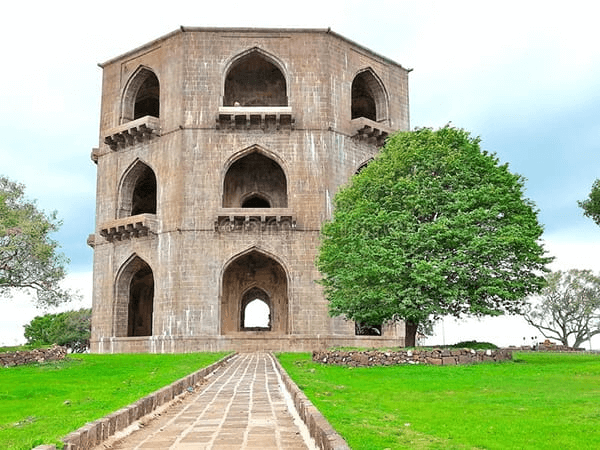
At the height of 3080 feet above sea level and roughly 700 feet above the city, the Salabat Khan II Tomb can be found. From any location in the city, the Tomb offers a fantastic sight of the entire city. Although just three storeys were ever built, it is believed that the monument was initially supposed to be a seven-storey complex. The building features an eight-sided, conventional design. 2. Ahmednagar FortOne of the best-built and most impregnable forts was formerly the Ahmednagar Fort, which is today under the military administration of India. Ahmed Nizam Shah constructed the Ahmednagar Fort in 1490. The Fort is circular in design and is supported by 22 bastions and walls that are 18 metres high. The defence system of the Fort consists of 24 towers and a trench that is 30 metres wide and 4 to 6 metres deep. Only after passing via the suspension-drawn bridges that cover the trench 30 metres wide can one access the Fort's two entrances. 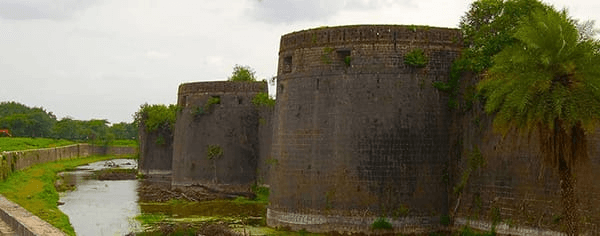
Since the Mughal era, the Ahmednagar Fort has been under the power of different empires and kings. The Ahmednagar Fort's past suggests that it once served as a royal jail. There have been numerous invasions, and Ahmednagar Fort has seen them all. One such event that stands out is during the 1942 Quit India Movement; the British used the Ahmednagar fort to place Pandit Jawaharlal Nehru and a few other Nationalists who were members of the Congress Working Committee under home confinement. Nehru authored his book "The Discovery of India" in this Fort. There is a museum in several of the Fort's chambers, and visitors are welcome to view the Leaders' Room. 3. Cavalry Tank MuseumThe Armored Corps Centre and School established the Cavalry Tank Museum in 1994. It is a one-of-a-kind museum in Asia that includes about 50 antique armoured warfare vehicles. The Museum is home to various armoured vehicles and battle tanks from multiple battles, including World War I and the Indo-Pakistani Wars in 1972. 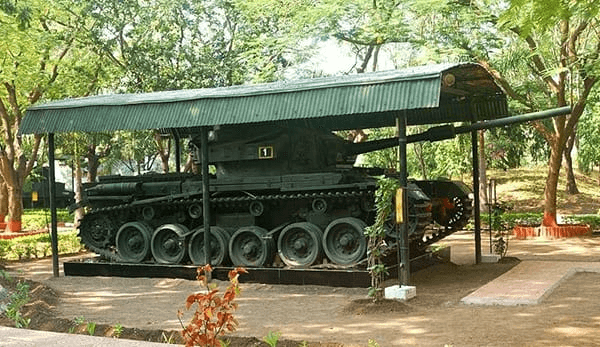
The oldest armoured car on exhibition is the Rolls-Royce Silver Ghost. Armoured tanks having British heritage include the Valentine, Churchill Mk VII, Matilda I, Centurion Mk II, and Archer Tank Destroyer. One of the collections of tanks is the Vijayanta Main Battle Tank, the hallmark of India. The Museum takes visitors back in time to the wars the tanks fought with all of these Big and Mean Machines. The Cavalry Tank Museum is open to visitors every week from 9:00 AM to 5:00 PM. There is an entry fee with extra photography and video recording charges. 4. MeherabadThe Iranian term "Mihir," which signifies "a friend," is the origin of the English name "Meherabad." Similarly, "Mithira" in Sanskrit denotes "a flourishing settlement." Meher Baba, a spiritual figure, first established Meherabad as an ashram in 1923. While still alive, Meher Baba decided to transform his ashram into his Samadhi centre. The ashram became one of the busiest pilgrimage sites after his passing. 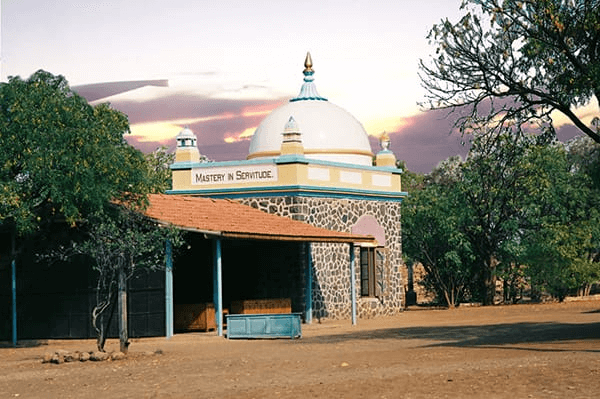
Today, worshippers from India and various backgrounds pay their respects at the Samadhi of the Holy Shrine. It is one of Ahmednagar's most calm and serene destinations. You can spend time with your loved ones and family and simultaneously absorb the ashram's spiritual atmosphere. 5. Rehekuri Blackbuck SanctuaryThe Rehekuri Blackbuck Sanctuary is one of Ahmednagar's best attractions for those who enjoy the outdoors. This large sanctuary, which covers an area of 2.17 square km, was created in 1980 and served as a protected ecosystem for endangered floral species and wildlife. Out of all of them, a herd of 400 gorgeous Blackbucks, sometimes known as Indian Antelopes, is undoubtedly the most impressive. 
In Maharashtra, they are also known as "Kalvit." This sanctuary is an excellent site for birdwatchers to see unusual breeds because it also shelters several rare bird species. At the sanctuary, you can register for walking and photography tours. The ideal ways to explore the sanctuary are on a jeep safari from 7:00 AM to 3:00 PM and by walking or trekking with a guide. 6. Farah BaghFarah Bagh, constructed by the Nizam Shahi emperors who ruled the region in the 13th and 14th centuries, is unquestionably one of the fascinating destinations to visit close to Ahmednagar. Murtaza Nizam Shah formerly utilised the magnetic structure as a shelter, going on walks and playing chess in the complex's gardens. 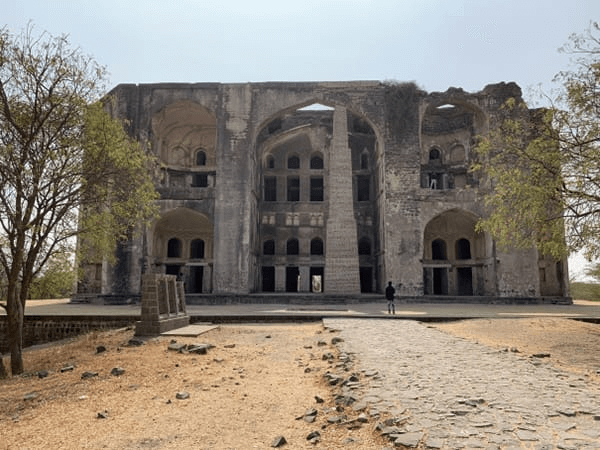
While most of the complex's structures are currently in ruins, it is fascinating to stroll through the gardens and complex and discover the lively history of the location and the events that were once carried out there. 7. Pimpri GawaliThe Parner Taluka's Pimpri Gawali is a Model Village about 25 km from Ahmednagar City and is well renowned for its Watershed and agricultural development initiatives. 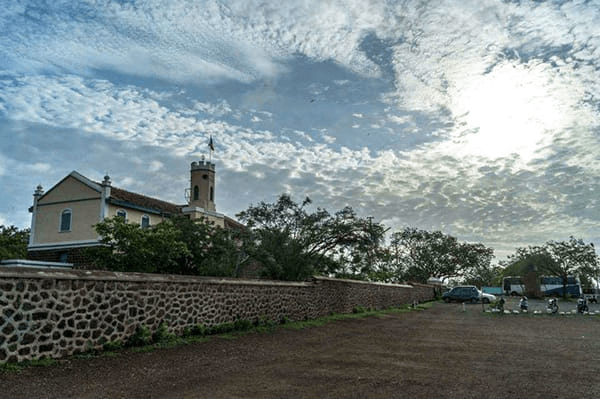
The town of Pimpri Gawali has won multiple honours for its construction efforts. It has been chosen as a Model Village after its inhabitants, motivated by activist Anna Hazare, altered the village's appearance. 8. Siddheshwar TempleOne of the most well-known tourist attractions in Ahmednagar is the Siddheshwar temple. This temple is located in the Taluka of Parner, 40 kilometres from Ahmednagar's central city, and Lord Shiva is honoured in this beautiful temple's rich architectural details. 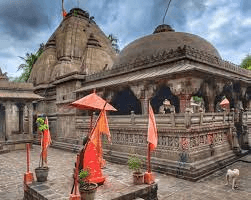
Pilgrims come to this temple for worship, a picnic, and sightseeing since it is surrounded by foggy hills, ponds, and waterfalls, which create an enchanting natural atmosphere. The festive months of "Sravan" are the ideal time to visit the temple. The area is alive with a passion for celebration and cultural events, and hundreds of pilgrims gather to enjoy themselves together. 9. Bagh Rauza FortOne of the most well-known tourist destinations in Ahmednagar is the historic site known as Baugh Rauza Fort. Since Ahmed Nizam Shah, the man who founded the city of Ahmednagar, is buried here, this Fort is also known as the "Garden of Shrine." 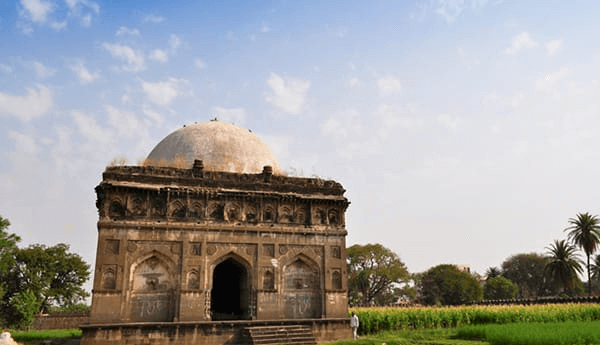
Beautiful carvings and Mughal architecture can be found throughout the Fort. The inscriptions from the Koran are written in gold on the Fort's domes and are carved out of excellent black stone. The Tomb's sculptures have resisted the time test and remain undisturbed until today. 10. Randha FallsRandha Falls, one of the most captivating Ahmednagar tourist attractions, is located 10 miles from the Bhandardara Bus Stop. The water, formed over River Pravara, splashes down from a level of 170 feet into a narrow valley. The monsoon season is the ideal time to view this majestic waterfall in all its glory. 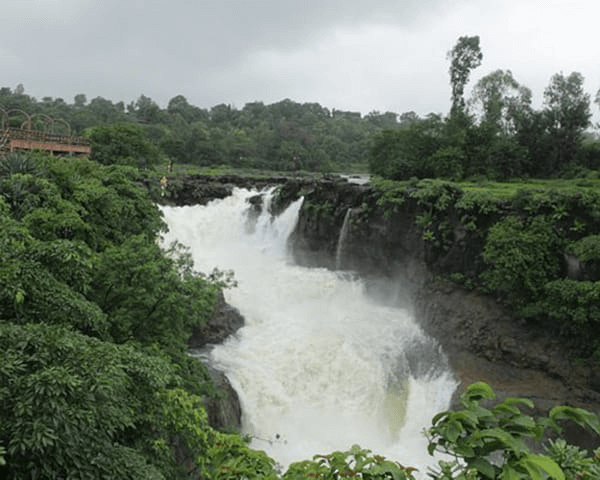
The waterfall is fed by precipitation, which increases in intensity as it flows from the mountain's cliffs. Any visitor would find it to be an extraordinary sight. 11. Damdi MasjidThe Damdi Masjid, one of the most fascinating yet underestimated attractions close to Ahmednagar, must be visited when visiting the city. The building was built by an aristocrat named Sahir Khan, but Chand Bibi, the Muslim Queen, most likely constructed it. There is no doubt about this masjid's outstanding architectural design. 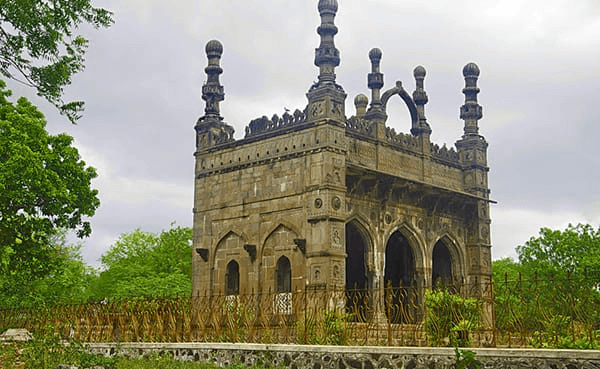
The mosque was initially built for Shia Muslims, but after the Deccani Kings of Ahmednagar conquered it, it was modified for Sunni Muslims. This mosque has unique calligraphy and beautiful sculptures. According to legend, this mosque was maintained by Sufi fakirs and labourers using the least amount of their coins.
Next TopicTourist places in Anantapur
|
 For Videos Join Our Youtube Channel: Join Now
For Videos Join Our Youtube Channel: Join Now
Feedback
- Send your Feedback to [email protected]
Help Others, Please Share









